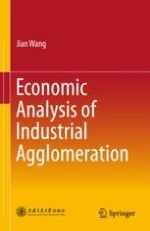2018 | OriginalPaper | Chapter
3. Industrial Agglomeration: A Simulation Model
Author : Jian Wang
Published in: Economic Analysis of Industrial Agglomeration
Publisher: Springer Singapore
Activate our intelligent search to find suitable subject content or patents.
Select sections of text to find matching patents with Artificial Intelligence. powered by
Select sections of text to find additional relevant content using AI-assisted search. powered by
